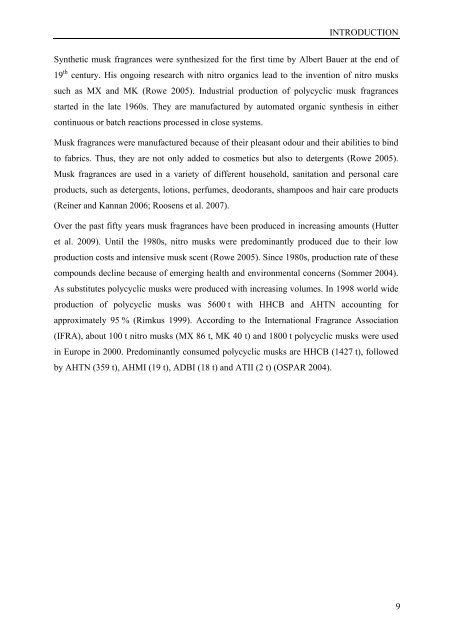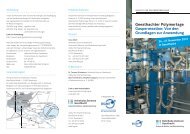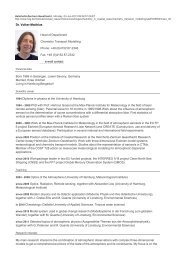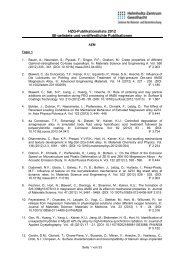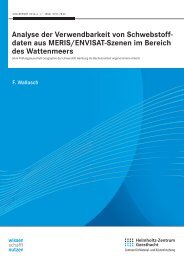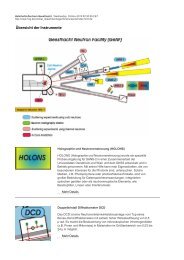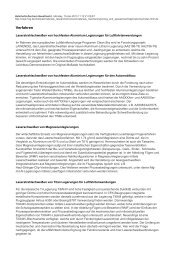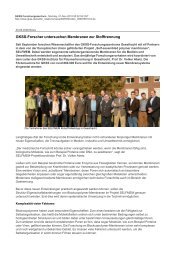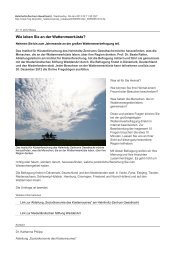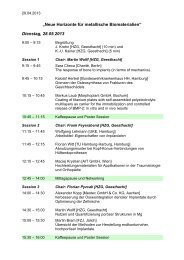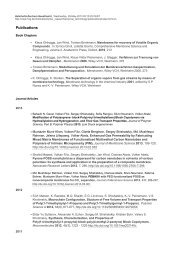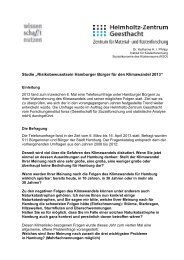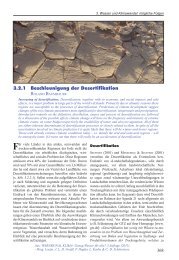Landfills and waste water treatment plants as sources of ... - GKSS
Landfills and waste water treatment plants as sources of ... - GKSS
Landfills and waste water treatment plants as sources of ... - GKSS
You also want an ePaper? Increase the reach of your titles
YUMPU automatically turns print PDFs into web optimized ePapers that Google loves.
INTRODUCTION<br />
Synthetic musk fragrances were synthesized for the first time by Albert Bauer at the end <strong>of</strong><br />
19 th century. His ongoing research with nitro organics lead to the invention <strong>of</strong> nitro musks<br />
such <strong>as</strong> MX <strong>and</strong> MK (Rowe 2005). Industrial production <strong>of</strong> polycyclic musk fragrances<br />
started in the late 1960s. They are manufactured by automated organic synthesis in either<br />
continuous or batch reactions processed in close systems.<br />
Musk fragrances were manufactured because <strong>of</strong> their ple<strong>as</strong>ant odour <strong>and</strong> their abilities to bind<br />
to fabrics. Thus, they are not only added to cosmetics but also to detergents (Rowe 2005).<br />
Musk fragrances are used in a variety <strong>of</strong> different household, sanitation <strong>and</strong> personal care<br />
products, such <strong>as</strong> detergents, lotions, perfumes, deodorants, shampoos <strong>and</strong> hair care products<br />
(Reiner <strong>and</strong> Kannan 2006; Roosens et al. 2007).<br />
Over the p<strong>as</strong>t fifty years musk fragrances have been produced in incre<strong>as</strong>ing amounts (Hutter<br />
et al. 2009). Until the 1980s, nitro musks were predominantly produced due to their low<br />
production costs <strong>and</strong> intensive musk scent (Rowe 2005). Since 1980s, production rate <strong>of</strong> these<br />
compounds decline because <strong>of</strong> emerging health <strong>and</strong> environmental concerns (Sommer 2004).<br />
As substitutes polycyclic musks were produced with incre<strong>as</strong>ing volumes. In 1998 world wide<br />
production <strong>of</strong> polycyclic musks w<strong>as</strong> 5600 t with HHCB <strong>and</strong> AHTN accounting for<br />
approximately 95 % (Rimkus 1999). According to the International Fragrance Association<br />
(IFRA), about 100 t nitro musks (MX 86 t, MK 40 t) <strong>and</strong> 1800 t polycyclic musks were used<br />
in Europe in 2000. Predominantly consumed polycyclic musks are HHCB (1427 t), followed<br />
by AHTN (359 t), AHMI (19 t), ADBI (18 t) <strong>and</strong> ATII (2 t) (OSPAR 2004).<br />
9


